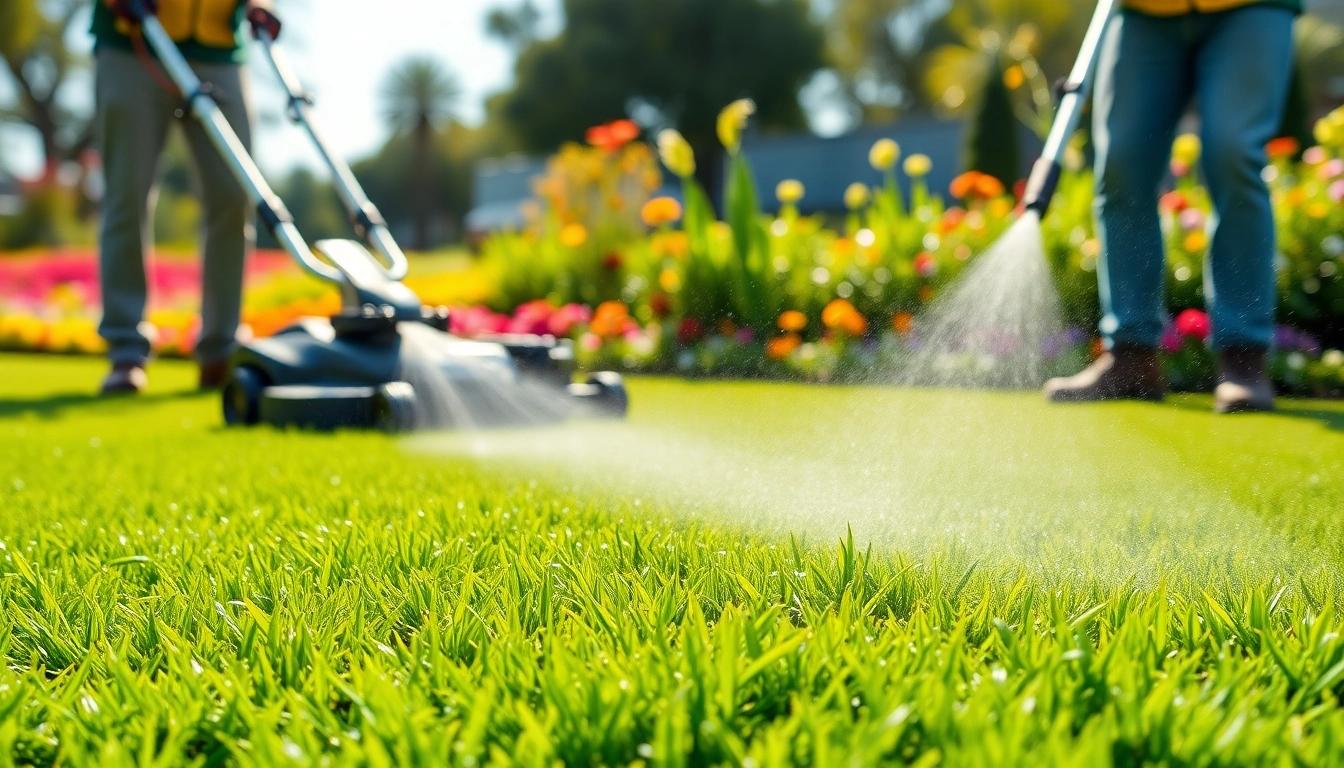
Understanding Turf Cleaning: Importance and Benefits
Turf plays a critical role in landscaping, providing a lush green environment that enhances aesthetic value and offers ecological benefits. However, to maintain its beauty and functionality, regular maintenance, particularly turf cleaning, is essential. This process not only preserves the visual appeal of your lawn but also ensures the health and longevity of the grass.
The Role of Turf in Landscaping
Turf, whether natural or artificial, serves as the foundation for beautiful outdoor spaces. It contributes to the ecological health of our environments by reducing soil erosion, filtering pollutants, and supporting local wildlife. A well-maintained turf area can provide recreational space for families and contribute to the overall curb appeal of residential and commercial properties.
Why Regular Turf Cleaning is Essential
Regular turf cleaning is crucial for preventing the accumulation of dirt, debris, and organic waste. Allowing these particles to build up can lead to various issues, including pest infestations, turf diseases, and unattractive appearance. Moreover, regular maintenance can enhance water absorption and nutrient uptake, resulting in healthier, more vibrant turf.
Environmental and Aesthetic Advantages
Maintaining clean turf not only enhances the aesthetic appeal of outdoor spaces but also provides environmental advantages. Clean turf can absorb more carbon dioxide, improve air quality, and promote local biodiversity. Additionally, a well-kept lawn can help control soil erosion and reduce runoff, contributing positively to the surrounding ecosystem.
Prep Work for Successful Turf Cleaning
Tools Required for Turf Cleaning
Before embarking on a turf cleaning journey, it is essential to gather the necessary tools. Key equipment may include:
- Rakes and Leaf Blowers: For removing leaves and larger debris.
- Power Washers: Ideal for deeper cleaning of artificial turf.
- Eco-Friendly Cleaning Solutions: To sanitize and protect the turf.
- Aeration Tools: To relieve soil compaction and promote healthy root growth.
- Hand Tools: Such as spades and hoes for spot treatment.
Assessing Turf Condition Before Cleaning
Conducting an assessment of the turf’s current condition is a critical step in the cleaning process. Look out for issues such as patchiness, discoloration, or excessive thatch buildup. This evaluation will guide your cleaning efforts and help prioritize areas that require special attention.
Creating a Cleaning Plan
A structured cleaning plan can streamline your cleaning efforts and ensure that all aspects of turf maintenance are covered. Your plan should include:
- A timeline for regular cleaning.
- Specific tasks for each cleaning session.
- Targets for improving turf health.
- Annual goals for maintaining turf vitality.
Techniques for Effective Turf Cleaning
Manual vs. Machine Cleaning Methods
Turf cleaning methods can be categorized into manual and machine techniques. Manual methods, such as raking and hand-pulling weeds, provide a more personalized touch and allow for meticulous care. However, machine cleaning techniques, like using power washers or specialized turf cleaners, can save time and offer thorough cleaning results, especially for large areas.
Using Eco-Friendly Cleaning Solutions
When cleaning turf, it is essential to opt for eco-friendly cleaning solutions that maintain the health of the turf and surrounding flora and fauna. Biodegradable detergents and organic solutions can effectively remove stains and odors without introducing harmful chemicals into the soil.
Seasonal Considerations for Turf Maintenance
Different seasons demand different cleaning techniques. In spring, focus on removing debris and assessing turf health after winter. Summer requires regular cleaning and watering. Fall is about preparing the turf for winter, while winter maintenance may include protecting the turf from frost and ice damage. Understanding these seasonal requirements ensures optimal turf health year-round.
Common Challenges in Turf Cleaning and Solutions
Identifying and Treating Turf Diseases
Turf diseases can arise due to factors such as over-watering, poor drainage, or environmental stress. Regular inspection and identification are vital for effective treatment. Common issues like brown patch, fungal infections, or pests need proper intervention, and treatment can include targeted fungicides or organic remedies based on the specific problem identified.
Dealing with Debris and Pollution
In areas heavily exposed to pollutants, cleaning the turf can involve more than just debris removal. You may need to conduct a thorough examination for contaminants, including chemicals or heavy metals. Automatic turf cleaning machines can be useful in this regard, as they often include filtration systems to remove harmful substances.
Weather-Related Issues Impacting Cleaning
Weather variations can greatly influence turf maintenance strategies. Rain can facilitate deep cleaning but also hinder cleaning efforts if the ground is overly saturated. Conversely, hot, dry conditions can lead to turf stress and may require hydration as part of the cleaning process. Adaptability is critical in managing these fluctuations effectively.
Measuring Success: Post-Cleaning Maintenance
Signs of a Successful Turf Cleaning
After completing the turf cleaning process, a few indicators can signify success. These include vibrant green coloration, reduced thatch layer, improved drainage, and a noticeable decrease in pest activities. Regular monitoring after a cleaning can ensure any issues are addressed promptly.
Long-Term Maintenance Strategies
To maintain the results of turf cleaning, implement long-term strategies such as regular mowing, consistent aeration, and applying organic fertilizers to promote healthy growth. Additionally, maintaining good watering practices will ensure the turf remains resilient and thriving.
Monitoring Turf Health After Cleaning
Ongoing monitoring is vital for understanding turf health post-cleaning. Regularly check for signs of disease, pest infestations, and areas that may require extra attention. Consider conducting soil tests at certain intervals to assess nutrient levels and identify any potential deficiencies.